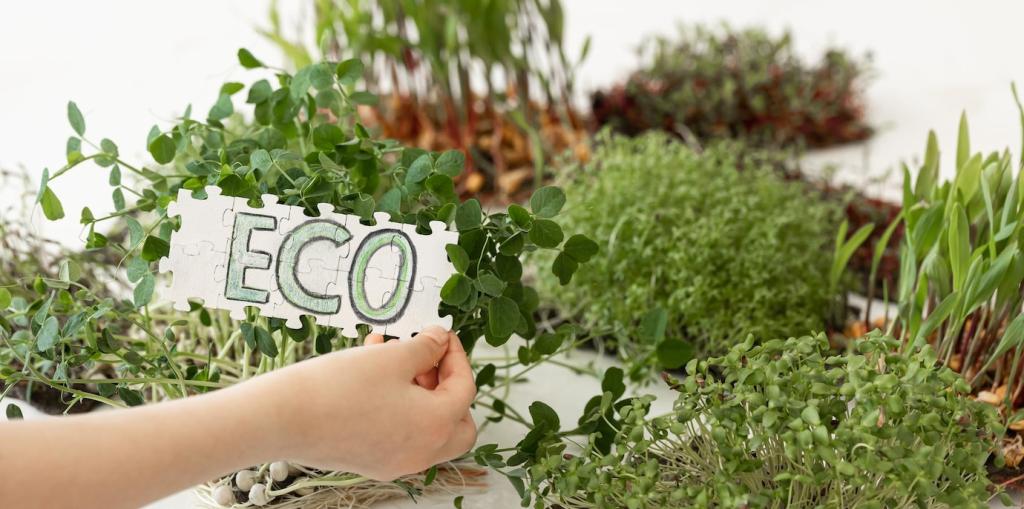Chosen theme: Innovative Green Building Materials. Step into a world where buildings breathe, materials heal, and every brick counts toward a cooler planet. Explore practical ideas, inspiring stories, and science-backed choices to transform how we build. Subscribe to stay ahead of the curve and join the conversation.
Why Innovative Green Building Materials Matter Now
The Carbon Math Behind Materials
Embodied carbon can account for a building’s majority emissions before the first light turns on. Innovative green building materials reduce that footprint through recycled content, low-energy processing, and even carbon capture during production.


Healthier Spaces, Happier People
Low-toxicity, bio-based products help reduce VOCs and allergens, improving occupant well-being. Think natural fibers, lime-based binders, and adhesives with verified emissions data that make indoor environments feel fresher, calmer, and more productive.
Bio-Based Breakthroughs: Bamboo, Hempcrete, and Mycelium
01
Bamboo matures quickly, stores carbon, and boasts remarkable tensile strength. Engineered bamboo panels and laminated elements create elegant structures that feel warm underhand while delivering serious performance in frames, floors, and façades.
02
Hemp shiv and lime binders yield a lightweight, vapor-permeable wall material with impressive thermal inertia. A builder told us indoor temperatures stabilized noticeably after retrofitting, cutting energy use and reducing musty odors.
03
Mycelium-based blocks grow in molds, creating biodegradable components with excellent acoustic damping. One young architect grew prototype panels in her garage, testing fire resistance and discovering a surprisingly earthy, calming scent during installation.

Electric arc furnace steel made from scrap significantly cuts emissions. With robust supply chains and consistent quality, it supports large spans and quick erection while aligning with circular economy goals and procurement policies.

Crushed glass pozzolans replace cement, improving durability and reducing clinker use. Recycled aggregates in concrete and base layers keep materials local, lighten trucking loads, and preserve natural quarries for future generations.

Post-consumer plastics form durable decking and cladding that resist moisture and insects. With careful fire-rating selection, teams achieve a clean, modern look while preventing thousands of bottles from reaching landfills or waterways.
High-Performance Insulation with a Green Edge
Ultra-light aerogel blankets deliver exceptional R-values in slim assemblies, perfect for retrofits with tight constraints. They reduce thermal bridges around frames, cutting operational energy bills without adding bulky wall thickness.

LC3 and Supplementary Cementitious Materials
Limestone calcined clay cement replaces a chunk of clinker, trimming emissions. Combined with fly ash or slag, it maintains strength while improving workability and long-term durability in demanding environmental conditions.
Geopolymers and Alkali-Activated Binders
Geopolymer concretes cure at lower temperatures and can incorporate industrial byproducts. Early pilots show compelling durability and chemical resistance, with on-site crews noting familiar finishing techniques and set times.
Carbon-Curing and Sequestering Mixes
Injecting CO2 during curing mineralizes carbon into stable forms, locking it into concrete. Precast plants report measurable strength gains, offering a rare synergy between emissions reduction and structural performance.
Microbial agents activate when cracks admit moisture, precipitating minerals that seal gaps. This extends service life, reduces repairs, and keeps embodied carbon locked in for decades of reliable performance.

Focus on declared unit, system boundaries, and impact categories. Compare like with like, and watch for recycled content, transportation distances, and plant-level energy sources that influence embodied results.
Proving Performance: Data, Labels, and Certifications
From Vision to Job Site: Design Tips and Case Stories
Specify mechanical fasteners, standardized modules, and reversible joints. Future you will thank present you when components reenter circulation, preserving value and cutting waste on renovation day.
From Vision to Job Site: Design Tips and Case Stories
One rural school swapped foam-heavy walls for hempcrete and cellulose. Teachers reported fewer afternoon headaches, and the maintenance team celebrated quieter HVAC cycles through peak spring testing weeks.

